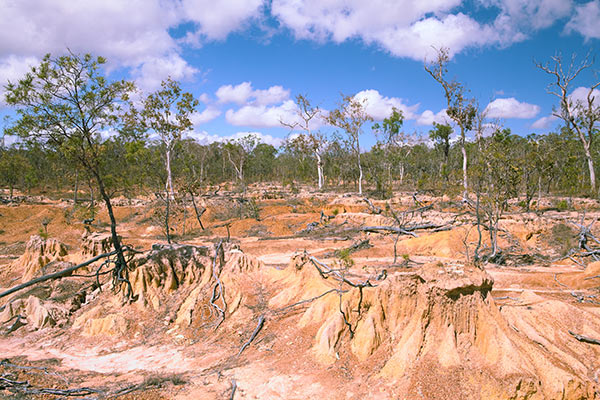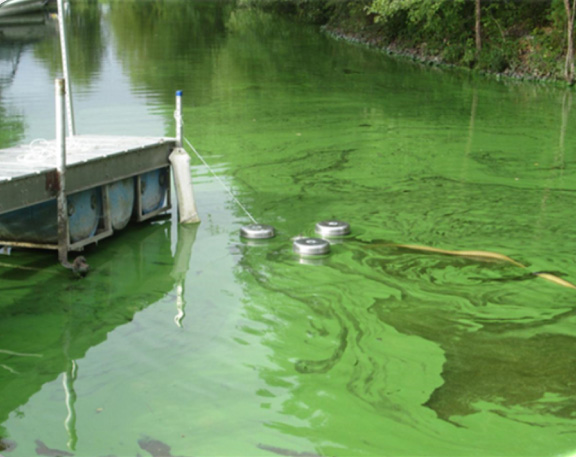Climate Change, COVID, and Clean Water
One of my New Year’s resolutions is a recommitment to educating others about Climate Change and its impacts.
Really?” you might ask. “While the COVID-19 pandemic rages on, that tired old topic of climate change is what’s on your mind?”
Before writing me off as obtuse in the face of COVID-19’s impacts, please realize that it is precisely because of the pandemic that I’ve made this commitment. That’s because Climate Change, Clean Water, and COVID-19 are inextricably linked.
The overlap between Climate Change and Clean Water may seem obvious for some readers (this is a YSI blog after all), and in the first section of this blog, I’ve looked at the three main ways Climate Change impacts Clean Water. The relationship between Climate Change and COVID is perhaps less obvious, though of great interest to your humble microbiologist author, and hopefully interesting to readers who may not have considered how the practices that drive Climate Change also make us more vulnerable to pandemics. The relationship between Clean Water and COVID, is crucially important, and it is now painfully apparent that lack of access to Clean Water has a major impact on both infection and mortality associated with COVID.
Climate Change and Clean Water
Climate change makes it harder for everyone in the world to get clean water, because it impacts the quality of source waters used for drinking and other household purposes. The U.S. EPA recognizes three ways that Climate Change threatens water quality:
- Stormwater Runoff
- Erosion and Sedimentation
- Harmful Algal Blooms
Historical records suggest that as the Earth’s climate has warmed, more frequent and more intense weather events occur around the world, as detailed by the National Climate Assessment in the U.S. The events that bring heavy precipitation, ranging from intense storms to hurricanes, deliver pollutant-laden stormwater into our natural and man-made waterways. The pollutants can include nutrients like phosphorus and nitrogen from land fertilizers, dangerous microbes from sewage systems, heavy metals from industrial waste sites, road salt, plastics and garbage from landfills and dumps, and a disturbingly long list of emerging pollutants, such as per- and polyfluoroalkyls substances (PFAS).
Stormwater runoff is not exactly the same thing as erosion and sedimentation, though sometimes I’ve heard people use “runoff” when they’re really talking about erosion, and vice versa. In reality, runoff isn’t always associated with soil erosion, which occurs along water-adjacent land masses. Essentially erosion is the transport of soil via a waterway. The soil ends up deposited somewhere else (drainage systems, lake beds, etc.), and that is sedimentation.
Sometimes it’s worth reminding ourselves why soil erosion matters. Food, animal feed, natural material for textiles, microbial activity that cleans the air and water—all are dependent upon healthy soils, as outlined in a fantastic 2017 paper by Borrelli et al. (Nature Communications 8: 2013). Soils are as foundational to life on Earth as water is.

Yet it is water flow that causes the most common and concerning type of soil erosion, and Climate Change increases water flow in at least two ways. First, the volume and force of water flowing in soil-flanked waterways is more common due to the same heavy precipitation events that cause stormwater runoff. Second, increasing temperatures have a direct effect on things like snow and ice melt, which also brings more water flow, especially in mountainous and polar regions.
Finally, more frequent, longer-enduring, and larger Harmful Algal Blooms (HABs) are a direct and indirect consequence of Climate Change. The processes of stormwater runoff, erosion, and sedimentation all deliver nutrients where they would normally be in limited supply. This nutrient abundance, or eutrophication, gives algae a growth advantage over their plant and microbial competitors in aquatic ecosystems. Secondly, warmer temperatures directly favor the growth of some algae, especially the blue-green algae (a.k.a. cyanobacteria) that are associated with HABs in source waters. As some of you know, this is a pet topic of mine for which we have a number of blogs, webinars, and Mission Water articles, some of which we’ve collated on our Harmful Algal Blooms page.

Climate Change and COVID-19
This relationship has interested me since the early 2000s, when I was teaching virology and working at a contract research institution that studied the spread of viral diseases. Back then, scientists warned that the influenza virus, likely Avian flu (H5N1 for you microbiologists out there) or swine flu (H1N1), or a coronavirus like the emergent SARS coronavirus of 2003, would very likely lead to a pandemic someday. That message was heard loud and clear by many governments and businesses, many of whom put in place pandemic response plans that helped them in 2020.
Part of the message that always got lost both in 2003 and today is that climate change makes pandemics more likely to occur, and weakens our ability to react. This is a concept that is difficult to communicate because the nature of that relationship is complex, causality is almost impossible to prove, and the actions required to prevent it feel more painful at the moment than the perceived pain of what is to come. (Perhaps until now?)
Some of the same practices that lead to Climate Change render pandemics more likely to occur. For example, habitat destruction and warming temperatures drive cold-acclimated life forms, ranging from bacteria to bears, into new territories. It ends up that the snowshoe hare actually likes, well, snow (see Sultaire et al., 2016, Proceedings of the Royal Society B), and it has to live farther north now to get it. Similarly, the range for warm-loving species has broadened, and they are showing up where we didn't see them before or changing their migratory patterns. Viruses in both the native animal populations and the newcomers can trade bits of DNA or RNA (called recombination), and new viruses will emerge. Contact with humans in these new regions, especially as we move into their habitats, both lend more opportunities for the new and recombined viruses to infect us.

These animal-to-human jumps, zoonoses as they are called, have always occurred, but are more likely with more people coming into contact with animals. Some of this is simple math: more people in more areas means more contact with more animals. There is simply a greater probability of us coming into contact with animal viruses. Other opportunities come from trying to feed all those people. The increased global consumption of meat and the factory farming practices required to produce meat, already known to be among the largest contributors to Earth-warming greenhouse gases, also increase our interactions with virus-containing animals. This is why Avian flu is a risk associated with intensive chicken farming and swine flu with intensive hog farming.
So, does any of this mean that COVID-19 was caused by climate change? This is a pretty loaded question, but of course, the one that is asked by people all the time. In reality, the answer is no. Climate Change cannot be proven to have caused COVID-19, any more than we can prove that yeast causes beer. Of course, the yeast is going to do things to the hops and barley and sugar and water that are going to lead to beer. We all accept this, and we understand the processes pretty well. But is that the same thing as causing beer? Such a direct cause-and-effect relationship is almost never able to be proven in the natural world for such complex partners in a relationship.

I would say with high confidence, however, that there is a correlation between Climate Change and COVID-19, emergent viruses, and future pandemics, just like there is a correlation between yeast and beer, and even specific yeast strains and different flavors in beer. In other words, the practices that foster Climate Change have also fostered an environment for a highly infectious virus to emerge and rapidly spread through our densely populated planet.
The implications of this point are serious because it means that intellectually, and even socially and politically, we should not regard Climate Change as a topic separate from COVID-19. This is among the reasons for my New Year’s resolution. There has been very little public conversation about the connection between these issues. Similarly, there needs to be more conversation about COVID-19 and clean water.
COVID-19 and Clean Water
At the end of March 2020 (doesn’t that seem like a million years ago?!), I wrote a blog entitled Solving Water During a Pandemic. I cited this World Health Organization literature entitled “Water, sanitation, hygiene, and waste management for SARS-CoV-2, the virus that causes COVID-19.” This document was updated in July 2020, and slightly expanded. By and large, the guidance has not changed: hand-washing is an absolute necessity to help prevent transmission of the virus that causes COVID-19.
Something I found interesting in the updated document was the acknowledgment of the possibility, albeit unlikely, for coronavirus to be transmitted via feces, a possibility that some scientists warned about as early as May 2020. Today it is known that the coronavirus that causes COVID-19 can survive for many weeks in feces, a convenient fact that is used to track community outbreaks, as described in this fascinating blog about using autosamplers for wastewater sampling.
The blog makes the case that the safety of the scientists collecting samples is one of the main reasons to use an autosampler. Similarly, while there has never been a confirmed case of transmission of COVID-19 via feces, it is recommended by the WHO that COVID-19 patients have their own toilet, and a toilet should be flushed with the lid down to prevent droplet spread and aerosolization.
How do you do these things if you don’t have access to Clean Water?
Again, Climate Change makes it harder for everyone in the world to get Clean Water. But the lack of Clean Water is sorely amplified in some areas of the world, and that in turn amplifies the impacts of COVID-19. The consequences include increased risks of infection, less access to treatment, compromises in the quality of the treatment, and less favorable treatment outcomes.
This is exemplified in a press release from the WHO in December 2020 which highlights a report, entitled Fundamentals first: Universal water, sanitation, and hygiene services in health care facilities for safe, quality care. As stated,
Worldwide, 1 in 4 health care facilities has no water services, 1 in 3 does not have access to hand hygiene where care is provided, 1 in 10 has no sanitation services, and 1 in 3 does not segregate waste safely.
Around 1.8 billion people, almost a quarter of the world’s population, rely on medical facilities with no water service!
The workers and the patients at these facilities are at a much higher risk than elsewhere in the world, and even in more developed areas, the issues of drought (again—induced by Climate Change!) place sanitation and access to Clean Water at risk. So yes, the connection between Clean Water and COVID-19 is very, very strong!
In closing, I hope that the relationship between Climate Change, Clean Water, and COVID-19, and in fact public health more generally, is clear. To support Climate Change education is to also support access to Clean Water, which also will support global communities who will grapple with the effects of COVID-19 for months or years to come.
Will you join me in making Climate Change education a priority in 2021? Follow along with me and let's have a conversation on Twitter @WaterWoman.

Additional Blog Posts of Interest
Tracking COVID-19 Community Outbreaks with Autosamplers
Coronavirus Disinfectants and the Need for Increased Production
How to Disinfect Your Field Water Quality Equipment
Solving Water During a Pandemic: What Could Be More Essential?